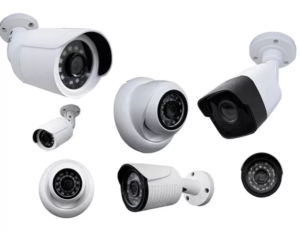When a judge sets bail it is an act of trust that you will return to court for the rest of your legal proceedings. This includes not only attending your hearings but also following the conditions set by the judge.
These may include check-ins with your agent, not leaving the state and not committing any new crimes. Missing bail could result in the judge keeping your collateral or even sending you back to jail. Visit https://aamericanbailbonds.com/areas-we-service/bail-bonds-palm-bay-fl/ to learn more.

Bail Bonds allow an accused person to remain outside of jail while awaiting their court case, upholding the principle of innocence until proven guilty. However, obtaining bail can be a difficult task for those who find themselves in trouble with the law. A judge will typically set bail in a variety of ways, with the most common types being cash or collateral bonds. If the defendant shows up to all required hearings, their bail will be refunded by the court, but if they skip or flee, the court will keep the deposit or collateral and issue an arrest warrant.
While bank loans are often used to pay for bail, they can be extremely costly and take weeks or months to process. This is why many people choose to work with a bail bondsman, which works as a sort of insurance company that will pledge money as a guarantee that the defendant will show up to their court dates. In addition, the bail agent will charge a fee for their service, which is usually a percentage of the total bail amount.
Unfortunately, the bail industry has been able to profit immensely from this system, with the largest companies in the States making billions of dollars annually. This is because they have exploited and expanded six loopholes in the system, which allows them to avoid paying up when a defendant fails to appear in court.
This is the first in a series of reports that the Center for American Progress will release to shine a light on the commercial bail industry and its harmful practices, which endanger the safety of individuals and their families, and erode the presumption of innocence in our legal system. The report exposes the harmful tactics that commercial bail companies engage in to maximize profits, and demonstrates how those practices affect marginalized communities across the country.
The most dangerous thing about the bail system is that it puts people who are facing serious criminal charges on a par with those who committed the most serious of crimes. That is why it is critical for everyone to know about the bail bond option and how it can help them to get out of jail faster and stay out until they have their day in court.
It’s Affordable
Bail bonds allow you to avoid the high upfront cost of cash bail. The bail amount is set by a judge, and it’s typically based on how serious the crime is, the location of the case, and whether the court believes that the defendant will flee or fail to appear for his or her trial. If the judge determines that a person’s bond is too high to pay in full, they may request that the defendant or his or her family members provide some sort of collateral to secure the bond. This could include a house, car, or other property. This type of collateral is a good incentive for the defendant to stay in town and attend his or her court appearances. A person who fails to do so will not only lose their collateral, but they will also be arrested on a warrant.
When a person is arrested, it’s a stressful and confusing time for everyone involved. Having to spend months or even years saving up enough money to pay a large sum in order to get a loved one out of jail can put an unnecessary strain on families and friends. Many people live paycheck to paycheck, and adding another expense into their budget is difficult. Using a bail bond service allows people to get their friends and family out of jail quickly while not having to sell anything or go into debt.
Using a bail bond company will reduce the initial upfront costs of bail by only requiring the defendant or their family to pay a small percentage of the total bail amount. This is typically only 10% of the total bail amount, which can make it much easier for a person to afford the required payment.
In addition, a bail bond company will take care of all the paperwork and hassles associated with posting a bail bond. This will save the defendant or their family from having to deal with the stress and inconvenience of trying to meet all the strict requirements set by the court in order to post bail. Having to answer questions about where the money comes from, submitting to a background check, and answering other questions can be very intrusive and time-consuming for someone already dealing with the stress of an arrest.
It’s Easy
Most people have only ever heard of Bail Bonds on television or in movies, but they are an essential part of our legal system and are important to understand should you, a friend, or family member ever find themselves in trouble with the law. A Bail Bond is an agreement between you, the accused, and a company that will act as your surety to guarantee you will show up to your court dates. This is a service that is offered to those who are not able to afford to pay the bail amount set by the courts.
The Bail Bondsman will typically charge a non-refundable fee of around 10% of the total bail amount. They will also require a form of collateral, such as property, stocks, or jewelry to ensure that the accused will show up for their court dates. The bondsman will only return the collateral once the case is concluded and the accused has attended all of their required court dates as agreed to in the bond contract.
Bail amounts are set by the courts, and can only be changed through formal legal processes like a hearing. As such, it is not usually possible to negotiate the bail amount, but a Bail Bondsman may be able to lower the rate for you by taking on some of the risk themselves with higher collateral.
A Bail Bondsman will usually contact you before your court date to remind you, and they will even call you if you are a “skip.” In the event that you do skip bail, it is the responsibility of the bondsman to hire a bounty hunter to track you down and bring you back to jail. This is a very expensive process and can result in the accused losing any and all of their collateral.
Bail Bonds are an essential part of our legal system and make it possible for the accused to keep their jobs, care for their families, and continue their normal lives while awaiting trial. They are also an essential tool in reducing the number of cases that are pushed through the court system and never get to trial.
It’s Safe
Bail bonds have been around for centuries, and they continue to be a popular way for defendants to avoid spending time in jail while they wait for their court case to be resolved. The process is also useful for those who do not have the means to pay their bail in full and help reduce overcrowding in local jails. There are a few things you should know before you contact a bail bond agent, however.
While posting bail is an option for many people who have been arrested, it is not without some risks. One of the biggest risks is that a person who has been bailed out may fail to attend their scheduled court hearings, and in turn will forfeit their money. If this occurs, the person who posted the bail will need to pay the court back the entire amount, and can end up with additional fines and penalties as well.
Another risk is that a judge may decide that the person should not be released on bail, and instead should remain in pre-trial detention. The judge will examine the person’s arrest records, their previous criminal history, and their status in the community. They will also consider whether or not they are a flight risk. If the judge determines that a person is a flight risk, they will deny them bail and they will remain in custody until their trial date.
If a person does not show up for court, the bail bond company will need to hire a bounty hunter to track them down and bring them back into court. The person who posted the bail will need to pay them the full amount of the bond, and they can lose any assets or property that they pledged as collateral for the bail bond.
It is important to understand the risks associated with bail bonding, so you can make an informed decision about how best to assist your loved ones. By doing your research and working with reputable bail agents, you can help them get out of jail quickly and avoid any additional charges.







